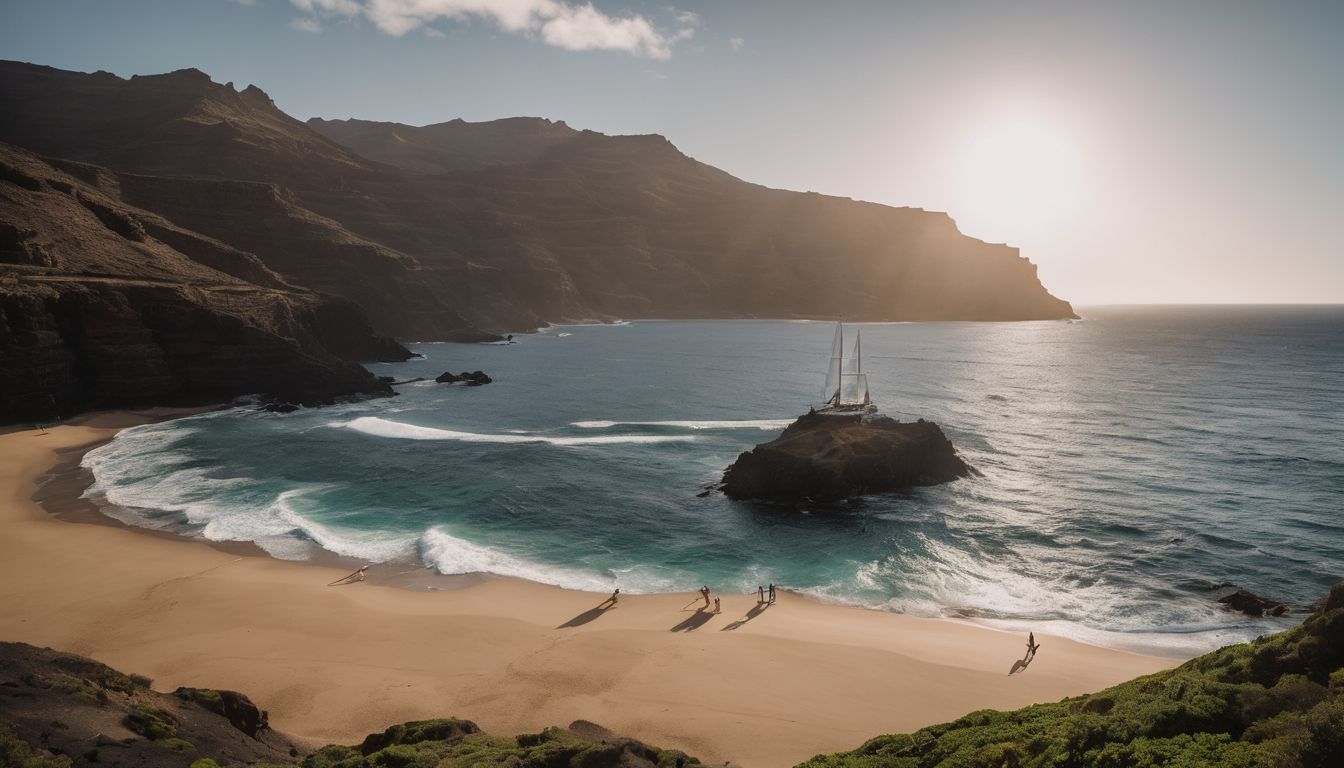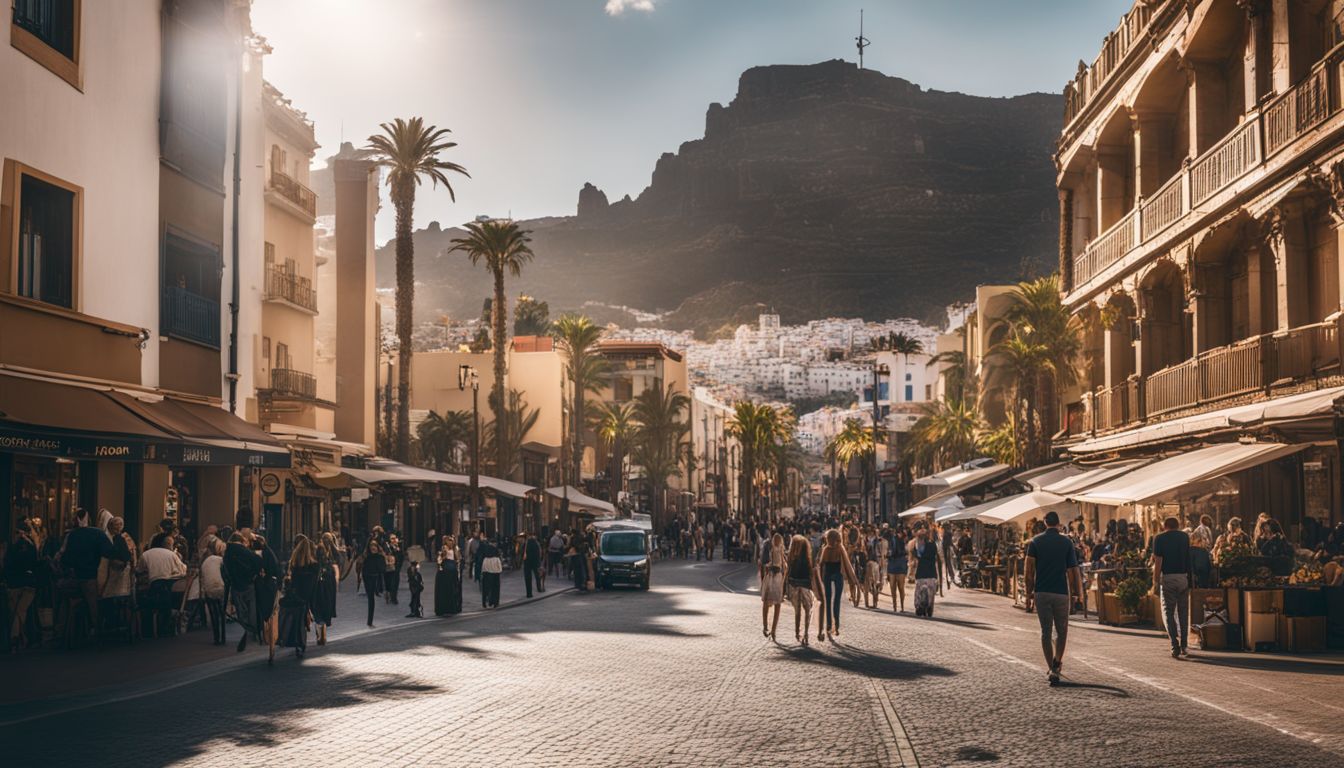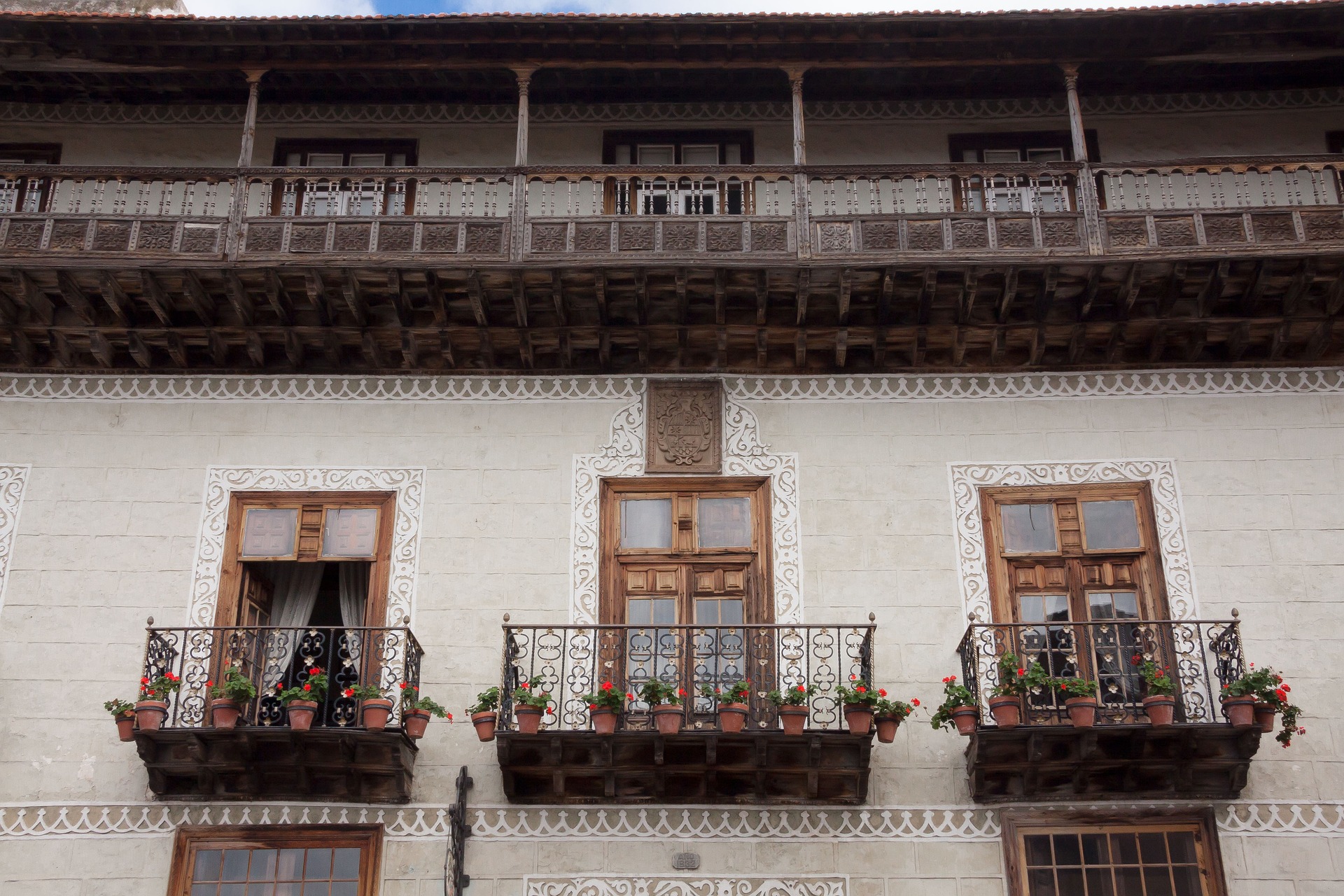Ever found yourself daydreaming about the captivating history of Gran Canaria? Maybe you’re a bit like me, with an unquenchable thirst for knowledge and a curiosity just itching to be satisfied…
This intriguing piece of Spanish jigsaw puzzle is bolstered by tales of ancient civilizations, adventurous explorers and a smattering of myth and legend that adds that extra dash of intrigue! Just in this blog post alone, we’ll pack our virtual bags and embark on an epoch-spanning journey through time to explore Gran Canaria’s rich heritage – an exploration guaranteed to satiate even the most curious minds.
So let’s don our adventure hats and dive right into the thrills lying ahead!
Early History of Gran Canaria
 Las Palmas de Gran Canaria was founded by Castilian settlers in the 15th century, but it was rediscovered by Mediterranean sailors long before that.
Las Palmas de Gran Canaria was founded by Castilian settlers in the 15th century, but it was rediscovered by Mediterranean sailors long before that.
Founding of Las Palmas de Gran Canaria
Las Palmas de Gran Canaria came to life in the late 1400s. After Castilian troops met the locals, they built a fort here. It was a key spot on their map because it helped control the Atlantic Ocean routes.
The spot grew into a lively city full of action and energy. Now, people know Las Palmas as the center of culture and fun for tourists in Gran Canaria. This city also has some famous spots like historical landmarks from ancient times or gorgeous sea views that draw tourists near and far!
Rediscovery by Mediterranean sailors
Mediterranean sailors set sail and found Gran Canaria again many years after the Romans left. The island had stayed hidden from European eyes for quite some time. These sailors came from places like Italy and Greece, known for their love of the sea.
Their find was a big deal as it put Gran Canaria back on the map in Europe. Word about this lovely island spread far and fast, catching ears all over the continent. Soon more people came to see what all the fuss was about.
It made Gran Canaria a hot spot where new stories were born, full of adventure and thrill!
Gran Canaria in Modern Times

In the 19th century, Gran Canaria experienced a rise in tourism that continues to this day, with the development of resorts in the 1960s attracting visitors from European circles.
Rise of tourism in the 19th century
Tourists began to visit Gran Canaria in the 19th century. They came not only for the sun, but also for the mild climate. Many of them were rich and wanted a nice place to go during winter months.
This brought money and fame to Gran Canaria as word about its beauty spread fast in Europe. The number of visitors grew each year, making the tourism industry grow too. As more people visited, it became clear that Gran Canaria was gaining popularity as a tourist spot.
Development of resorts in the 1960s
In the 1960s, Gran Canaria saw a significant development of resorts. This was an important time for the island’s tourism industry. The beautiful Maspalomas dunes became a popular attraction, drawing many European tourists to visit.
As a result, more hotels and accommodations were built to accommodate the growing number of visitors. These resorts offered amenities and services that catered to tourists’ needs, providing them with a comfortable stay during their vacation on the island.
This boom in tourism helped boost Gran Canaria’s economy and played a crucial role in its development as a popular tourist destination.
Importance of Gran Canaria in Spanish History
Gran Canaria became a province of Spain in 1821, with Santa Cruz as its capital and main port.
Canaries becoming a province of Spain in 1821
In 1821, the Canary Islands officially became a province of Spain. This means that Gran Canaria, along with the other islands in the archipelago, is recognized as part of Spain by the international community.
The capital city of Santa Cruz plays an important role in the governance and administration of the islands. The Canary Islands have representation in the Spanish government, which further affirms their status as a province.
So when you visit Gran Canaria, you are actually visiting a province of Spain with its own unique history and cultural heritage.
Santa Cruz as the capital
Santa Cruz is the capital of Gran Canaria, the largest city on the island. It is also an important port that connects Gran Canaria to other islands in the archipelago, such as Tenerife, La Palma, La Gomera, and Ferro.
Santa Cruz has a fascinating history and cultural heritage that make it worth exploring during your visit. The city played a significant role when the Canary Islands became a province of Spain in 1821.
Today, Santa Cruz is a bustling modern city with historical landmarks, beautiful beaches, and volcanic landscapes that attract tourists from all over the world.
Cultural Influences on Gran Canaria
Gran Canaria has a rich history of cultural influences, with the Arab presence in the 9th century and visits from traders hailing from Genoa, Majorca, Portugal, and France.
Arab presence in the 9th century
In the 9th century, Gran Canaria was influenced by Arab presence. This period brought cultural and economic exchanges to the island. The Arabs introduced new crops like sugar cane and almonds, which had a lasting impact on Gran Canaria’s agriculture.
They also brought their knowledge in irrigation systems and traditional crafts such as pottery and weaving. Today, you can still see traces of this Arab influence in architecture, language, and local customs on the island.
Visits from Genoese, Majorcan, Portuguese, and French traders
Throughout history, Gran Canaria has been a hub for trade and cultural exchange. Many traders from places like Genoa, Majorca, Portugal, and France have visited the island to exchange goods and ideas.
These visits have left their mark on Gran Canaria’s culture and heritage. The influences of these traders can be seen in the architecture, cuisine, and traditions of the island. From bustling marketplaces to unique flavors, the legacy of these traders is still alive today in Gran Canaria.
So when you visit this beautiful island, take some time to explore its rich history shaped by these European visitors.

